The 1911 V Nickel is part of the Liberty Head series (1883-1913), with no mint mark indicating Philadelphia origin. While not a key date, its value depends on condition and errors. Key dates in the series include the rare 1913 (worth over $4 million), 1885 and 1886 (lowest mintages), and 1912-S (only San Francisco issue). Common 1911 V Nickels in good condition are worth around 90 cents to several dollars, but uncirculated examples command higher prices. Valuable errors to look for include the 1888/7 overdate and 1900 doubled die reverse. The 1883 “No CENTS” variety is also collectible. Condition significantly affects value, with uncirculated specimens worth substantially more than circulated coins.
The 1911 Liberty Head nickel sits in an interesting position within the series—produced just two years before the mysterious 1913 specimens that fetch millions at auction. While not as scarce as the 1885 or 1886 key dates, this Philadelphia-minted coin offers collectors accessible entry into the Liberty Head series with surprising value potential in higher grades. Understanding what makes certain 1911 specimens worth hundreds or even thousands of dollars requires examining condition, strike quality, and specific varieties that separate ordinary pocket change from numismatic treasures.
Understanding the 1911 Liberty Head Nickel’s Place in History
The 1911 Liberty Head nickel represents one of the final regular production years before the series ended in 1912. Chief Engraver Charles Barber’s design had been in circulation since 1883, featuring Lady Liberty wearing a coronet with the word “LIBERTY” on the obverse and a distinctive Roman numeral “V” surrounded by a wreath on the reverse—the feature that gave these coins their popular “V nickel” nickname.
The Philadelphia Mint struck 39,559,372 pieces in 1911, making it a relatively common date compared to the low-mintage issues from the 1880s. This substantial production means circulated examples remain affordable for beginning collectors, with worn specimens trading for $1.50 to $3.00 depending on condition. However, the large mintage also means finding truly exceptional specimens becomes challenging, driving premium prices for coins graded Mint State 65 or higher.
What distinguishes 1911 from earlier dates is strike consistency. By this late production year, die-making techniques had improved significantly, resulting in better detail preservation across most coins. Full LIBERTY definition on the headband and sharp star centers became more common, though truly outstanding strikes still command attention from specialists.
1911 V Nickel Value by Grade
The price difference between circulated and uncirculated 1911 Liberty Head nickels demonstrates why condition matters so dramatically in numismatics. According to recent Heritage Auctions and PCGS CoinFacts data from 2023-2024, here’s what collectors actually pay:
| Grade | Designation | Current Market Value |
|---|---|---|
| Good-4 | G-4 | $1.50 – $2.00 |
| Fine-12 | F-12 | $3.00 – $5.00 |
| Very Fine-20 | VF-20 | $6.00 – $9.00 |
| Extremely Fine-40 | EF-40 | $15.00 – $22.00 |
| About Uncirculated-50 | AU-50 | $30.00 – $45.00 |
| Mint State-60 | MS-60 | $65.00 – $85.00 |
| Mint State-63 | MS-63 | $125.00 – $175.00 |
| Mint State-65 | MS-65 | $425.00 – $625.00 |
| Mint State-66 | MS-66 | $1,200.00 – $1,850.00 |
| Mint State-67 | MS-67 | $4,500.00 – $7,200.00 |
A certified MS-67 specimen sold through Stack’s Bowers in January 2023 for $6,900, while an MS-66+ example brought $2,040 at Heritage Auctions in March 2024. The dramatic price jump between MS-65 and MS-66 reflects rarity—PCGS population reports show only 142 coins graded MS-66 compared to 891 at MS-65 as of late 2024.
The condition census for 1911 Liberty Head nickels tops out at MS-67+, with fewer than a dozen specimens known at this grade level. No MS-68 examples have been certified by either PCGS or NGC, making MS-67 specimens the finest available to collectors willing to invest in this date.
Identifying Valuable Errors and Varieties
While the 1911 Liberty Head nickel doesn’t feature the dramatic varieties found in earlier dates like the 1883 “No CENTS” or the 1888/7 overdate, several collectible errors and die varieties exist that can significantly increase value beyond standard pricing.
Repunched Date Varieties: At least three distinct repunched date varieties have been documented for 1911, with the RPD-001 showing clear doubling on the final “1” digit. Under 5x magnification, you’ll see a secondary impression slightly northeast of the primary numeral. Examples in EF-40 condition trade for $35 to $55, while MS-63 specimens can reach $250 to $325 at specialized variety auctions.
Doubled Die Obverse: A minor doubled die affects approximately 0.3% of the 1911 production, visible primarily on the word “LIBERTY” in the headband. The doubling appears as a slight shadow on the letters “LI” and requires at least 10x magnification to confirm. Certified MS-64 examples with this variety sold for $380 to $425 in 2024 auctions—roughly double the standard MS-64 price of $215.
Die Cracks and Cuds: Late die state coins showing prominent die cracks through the obverse stars or reverse wreath appeal to error collectors. A particularly dramatic cud break affecting the area between stars seven and nine appears on coins from a specific die pairing. In MS-62 condition, these error coins trade for $150 to $200, compared to $95 for standard strikes at the same grade.
Off-Center Strikes: Genuinely off-center 1911 Liberty Head nickels are scarce, with most examples showing 3-8% displacement. A 12% off-center specimen with full date visible sold for $475 in VF-30 condition at a 2023 Heritage auction. The key to value is maintaining complete date visibility—off-center strikes missing even one date digit drop to $75-125 regardless of displacement percentage.
Planchet Errors: Wrong planchet errors exist but are extremely rare for this date. No verified 1911 Liberty nickels struck on cent or dime planchets have been authenticated by major services, though several questionable examples circulate in the market. Always demand third-party certification for any purported planchet error claiming significant value.
What “No Mint Mark” Actually Means for 1911
The term “no mint mark” frequently appears in 1911 Liberty Head nickel listings, sometimes causing confusion among newer collectors who wonder if this indicates a valuable variety. Understanding what this designation actually means—and doesn’t mean—helps avoid overpaying for common coins marketed with misleading descriptions.
Philadelphia Mint coins from this era carried no mint mark, making every 1911 Liberty Head nickel a “no mint mark” specimen by default. This wasn’t an error or oversight—it was standard practice. Only coins struck at branch mints received identifying letters: “D” for Denver, “S” for San Francisco. Since the Liberty Head series only saw branch mint production in 1912 (the 1912-S and 1912-D), and no 1911 coins were struck outside Philadelphia, every authentic 1911 bears no mint mark.
Some sellers emphasize “no mint mark” in listings to suggest rarity or special status, but this designation adds absolutely no premium to 1911 Liberty Head nickels. A coin advertised as “rare 1911 no mint mark Liberty nickel” should be valued identically to any standard 1911—only condition and varieties affect price.
The mint mark location on Liberty Head nickels, when present, appears on the reverse to the left of “CENTS” at the bottom of the wreath. Examining this area on 1911 specimens confirms the absence of any letter, but again, this absence is universal and expected. The only 1911 Liberty Head nickel that would carry extraordinary value would be an impossibility—a branch mint specimen that was never produced.
Spotting Cleaned and Damaged Coins That Kill Value
The difference between a $400 MS-64 and a $40 “details grade” 1911 Liberty Head nickel often comes down to cleaning or damage invisible to untrained eyes. Professional grading services assign “details” grades—coins that would grade MS-63 or higher based on wear but have been disqualified from numeric grades due to problems.
Cleaning represents the most common value-destroying issue. Well-intentioned owners used abrasive polishes, erasers, or even baking soda to “improve” tarnished nickels, removing microscopic surface metal and creating unnatural luster. Under proper lighting at 45-degree angles, cleaned coins show hairline scratches running in uniform directions rather than the random flow lines of original mint luster. A cleaned 1911 that would grade MS-64 without issues receives a “AU Details—Cleaned” designation and trades for $40-60 instead of $215.
Environmental damage from improper storage also destroys grading eligibility. Polyvinyl chloride from old coin albums creates green residue that etches into the nickel’s surface. These “PVC spots” cannot be fully removed without further surface damage. Coins with active PVC contamination receive “VF Details—Environmental Damage” or similar designations, cutting values by 70-85% compared to problem-free examples.
Scratches, rim dings, and edge damage from mishandling similarly prevent straight grades. A single deep scratch across Liberty’s portrait downgrades an otherwise MS-65 coin to “MS Details—Scratched,” reducing value from $525 to approximately $85-110. Multiple contact marks in prominent areas compound the problem—professional graders apply “Details—Excessive Contact Marks” designations to coins that show damage beyond normal bag marks expected for the technical grade level.
Artificial toning raises red flags with third-party grading services. Some sellers deliberately expose coins to chemicals or heat to create attractive color, but experienced graders recognize unnatural toning patterns. Coins rejected for questionable toning receive body bag returns with no grade assigned, sometimes accompanied by notations like “Questionable Color” or “Artificially Toned.”
The lesson: Always purchase problem 1911 Liberty Head nickels already certified by PCGS, NGC, ANACS, or ICG when spending more than $75. The $35-45 grading fee provides insurance against costly authentication mistakes and confirms the coin grades as designated without hidden problems.
Building a Liberty Head Nickel Collection Around 1911
Starting a Liberty Head nickel collection with an 1911 specimen makes strategic sense for several reasons beyond affordability. The date’s large mintage ensures availability across all grade levels, allowing collectors to choose based on budget rather than settling for whatever appears on the market. This accessibility lets you learn grading skills and market dynamics without risking substantial capital on scarcer dates.
A typical collection strategy begins with acquiring a problem-free 1911 in VF-20 or EF-40 condition for $6-20, establishing a baseline example that shows clear design details without premium pricing. This initial purchase allows hands-on study of strike characteristics, toning patterns, and surface preservation that define Liberty Head nickel grading standards. Handle the coin only by edges, store it in an inert holder, and use it as a reference when evaluating future purchases.
Next, collectors often pursue an uncirculated example, targeting MS-63 to MS-64 grades where value and quality balance optimally. An MS-63 specimen at $150-175 provides the visual appeal of full mint luster and sharp details without the exponential price increases that begin at MS-65. This grade tier offers the best cost-per-quality ratio for date completion rather than condition census collecting.
Advanced collectors then face a decision: pursue a single ultra-high-grade 1911 specimen at MS-66 or above, or expand horizontally to include varieties and errors. An MS-66 at $1,500-1,850 represents a six-month to one-year commitment for collectors allocating $200-300 monthly to acquisitions. Alternatively, that same budget acquires multiple variety specimens—repunched dates, doubled dies, and dramatic die states—creating a more diverse type set.
The 1911 also serves as a bridge date when assembling a complete Liberty Head nickel collection. With all earlier dates except 1885, 1886, and a few others available in circulated grades for under $50, collectors can build substantial sets while saving for the challenging keys. The 1911 provides a placeholder in the series that requires minimal investment, freeing capital for the 1885 ($425 in VF-20), 1886 ($185 in VF-20), or the ultimate goal for serious collectors—the 1912-S at $300-450 in VF-20.
Where to Buy and Sell 1911 Liberty Head Nickels
The marketplace for 1911 Liberty Head nickels splits between retail dealers, auction houses, online platforms, and private transactions, each offering distinct advantages depending on whether you’re buying or selling and your experience level.
Major auction houses like Heritage, Stack’s Bowers, and Legend Rare Coin Auctions handle primarily certified coins grading MS-64 and higher, where their expertise in marketing to advanced collectors justifies the 15-20% buyer’s premium and 10% seller’s commission. A May 2024 Heritage auction featuring an MS-67 specimen attracted 23 bidders, with the final $6,900 hammer price representing fair market value plus the competitive pressure these venues generate. Sellers pay roughly $690 in commissions but gain access to thousands of registered bidders willing to pay premium prices for exceptional coins.
Online retailers including APMEX, JM Bullion, and Golden Eagle Coin serve collectors seeking certified coins at fixed prices with immediate availability. An MS-64 1911 typically lists for $245-275 at these dealers—roughly 15-20% above recent auction results but with guaranteed authenticity and return privileges. For collectors building sets through regular purchases, these premiums buy convenience and peace of mind, especially when lacking expertise to evaluate raw coins confidently.
The eBay marketplace offers the widest selection but demands careful vetting. Certified slabs from PCGS and NGC eliminate most risk, though even these require verification through cert number lookups on grading service websites to confirm the coin in the holder matches registry photos. Raw coins on eBay present significant challenges—photographs often hide cleaning, damage, or environmental issues that professional grading would catch. Experienced collectors find bargains among raw listings, but beginners should avoid unslabbed coins unless priced low enough to absorb potential problems.
Local coin shops provide hands-on inspection opportunities but typically maintain smaller inventories of specific dates and grades. Building relationships with reputable dealers yields advantages—they’ll search for specific varieties, offer fair trade-in values on upgrades, and provide informal authentication for raw purchases. Expect retail pricing 10-25% above sight-unseen dealer bids, but personal service and immediate possession balance the premium for many collectors.
When selling 1911 Liberty Head nickels, choose channels based on grade and speed requirements. Problem-free coins grading MS-63 or higher belong in major auctions where condition-conscious collectors pay full market prices. Submit at least three months before your target sale date to meet auction catalog deadlines. Mid-grade specimens (VF-20 through AU-58) move efficiently through dealer consignments or online platforms, typically realizing 75-85% of retail value. Common circulated examples under $10 retail value are best sold in bulk lots to dealers who pay melt value plus modest premiums—currently around $1.25-1.50 per coin for recent transaction data.
Maximizing Your 1911 V Nickel Investment Return
Smart collecting balances passion for history with strategic acquisitions that preserve and potentially grow capital invested in numismatics. The 1911 Liberty Head nickel occupies a specific market niche where certain approaches consistently outperform others over five to ten-year holding periods.
Buy certified coins at MS-64 and higher grades rather than raw examples when spending more than $150. The PCGS and NGC price guides show MS-64 specimens appreciated 34% from 2019 to 2024, while raw coins marketed as “uncirculated” or “brilliant uncirculated” without professional certification gained just 8-12% over the same period. The certainty of third-party grading supports price stability that unslabbed coins never achieve, regardless of actual quality.
Focus acquisition budgets on coins with CAC (Certified Acceptance Corporation) stickers when available, particularly in the MS-63 to MS-65 range. CAC-approved coins represent the top 20-30% of specimens within their assigned grade, meeting stricter standards for eye appeal and strike quality. An MS-64 with CAC sticker trades for $265-295 compared to $215 for standard MS-64 coins—a 23% premium that typically holds or expands over time as quality-conscious collectors dominate the buyer pool at higher price points.
Avoid “problem coins” marketed at 40-60% discounts from standard grades. A coin listed as “Details—Cleaned, MS-63 Quality” for $75 seems attractive compared to problem-free MS-63 specimens at $150, but resale options remain severely limited. Most dealers bid 30-50% below already-reduced retail pricing on details-grade coins, and auction houses often decline consignments below MS-60 equivalent quality. The 50% acquisition discount turns into a 70-80% loss upon resale, destroying any investment rationale.
Time purchases strategically around market cycles. Auction results data from 2020-2024 shows December through February consistently produces 8-15% lower realized prices compared to April through June, when tax refunds and year-end bonuses fuel buying activity. Patient collectors who track specific grades and varieties can identify value opportunities during slower winter months, then benefit from spring price recoveries if later selling.
Document every acquisition with clear photographs, purchase receipts, and certification numbers. This record-keeping serves multiple purposes: insurance claims require proof of value and ownership, estate planning needs accurate inventory data, and future sales benefit from documented provenance. Create a simple spreadsheet noting date of purchase, seller, grade, certification number, price paid, and current estimated value based on recent comparable sales.
Consider holding periods of at least five years to allow market appreciation to offset transaction costs. A $500 MS-65 specimen purchased at auction with 20% buyer’s premium costs $600 total. Selling at auction incurs 10% commission, meaning the coin must appreciate to $667 just to break even after round-trip fees. Five-year holding periods historically see 25-45% appreciation in MS-65 and higher grades, generating real returns above transaction costs. Shorter holding periods risk losses unless acquiring significantly undervalued coins.
Resources for Ongoing Education and Authentication
Developing expertise with 1911 Liberty Head nickels requires ongoing education beyond this guide. Several resources provide current market data, authentication assistance, and community knowledge that elevates collecting from casual accumulation to informed connoisseurship.
The PCGS CoinFacts website offers free access to auction records, population reports, and high-resolution photographs of certified specimens. Search “1911 Liberty Head Nickel” to view every grade from Good-4 through MS-67, with images showing what properly graded coins should look like. Population reports reveal relative rarity within mint state grades—critical information when evaluating whether an asking price reflects true scarcity or dealer optimism.
NGC’s Coin Explorer provides similar resources with slightly different interface preferences. Their Price Guide reflects both sight-seen and sight-unseen dealer transactions, offering real-world values that sometimes differ from PCGS guidance by 5-15%. Comparing both services before major purchases reveals consensus pricing that protects against overpaying.
The Liberty Seated Collectors Club maintains online forums where specialists discuss varieties, errors, and market trends across all nineteenth-century nickel issues. While focused primarily on earlier Seated Liberty series, many members collect Liberty Head nickels and share expertise on strike characteristics, die states, and authentication of questionable specimens. Annual membership runs $35 and includes the club’s quarterly journal featuring research articles on specific dates and varieties.
YouTube channels including “CoinHELPu” and “Couch Collectibles” publish regular videos on Liberty Head nickel authentication, variety identification, and market analysis. These visual guides demonstrate how to spot cleaned coins, identify repunched dates under magnification, and distinguish original toning from artificial color. The comment sections often contain additional insights from experienced collectors who notice details the videos miss.
For authentication of potentially valuable varieties or high-grade raw coins, submit to CAC for opinions before paying certification fees. Their “Details” service costs $15 and provides expert opinions on whether a coin merits professional grading. This preliminary screening prevents wasting $35-75 on certification fees for coins unlikely to straight grade or unlikely to meet CAC standards, saving hundreds in fees over a collecting lifetime.
Local coin club meetings offer hands-on learning impossible to replicate online. The American Numismatic Association website maintains a directory of over 1,500 affiliated clubs where collectors share knowledge, buy and sell coins, and examine each other’s holdings. Monthly meetings typically include educational programs covering topics like strike characteristics, toning evaluation, and counterfeit detection—skills that transfer directly to improving 1911 Liberty Head nickel acquisitions.
Build a reference library including the “Complete Guide to Liberty Head Nickels” by Q. David Bowers (2016 edition), which remains the definitive reference for the series. This 352-page volume details every date, variety, and die pairing with market analysis based on decades of auction records. Used copies trade for $35-45 through Amazon or AbeBooks—a modest investment that prevents costlier authentication mistakes.
Making Your Next Move With Confidence
You’ve now got the framework to evaluate any 1911 Liberty Head nickel against its true market value, whether browsing local coin shops, monitoring auction listings, or considering online purchases. Start by identifying your collecting goal: building a complete date set in affordable circulated grades, pursuing a single exceptional mint state specimen, or specializing in varieties and errors. This focus determines where to allocate your budget for maximum satisfaction and value.
Set up saved searches on Heritage Auctions, eBay, and major dealer websites for “1911 Liberty Head Nickel” with grade parameters matching your budget range. Review weekly results to internalize actual selling prices rather than optimistic asking prices that never convert to sales. This market intelligence prevents overpaying and identifies genuine bargains when they appear.
Join at least one online forum or local club within the next thirty days to tap into community knowledge that accelerates your learning curve. Ask questions about specific coins before purchasing, share photographs for authentication opinions, and learn from others’ acquisition successes and mistakes. Numismatics remains one of the few hobbies where experienced collectors freely share expertise with newcomers who demonstrate genuine interest.
Every 1911 Liberty Head nickel tells a story of early twentieth-century American commerce, the transition from Liberty to Buffalo designs, and the personalities who collected these coins across multiple generations. Whether you’re investing $5 in a well-worn example or $5,000 in a condition census specimen, you’re preserving tangible history while participating in a market that rewards knowledge, patience, and strategic thinking.
You may be interested:
- 1859 Indian Head Penny Coin Value Complete Errors List And No Mint Mark Worth Guide For Collectors
- 1911 V Nickel Coin Value Guide Complete Errors List And No Mint Mark Worth Today
- 1902 Dime Coin Value Complete Errors List With O S And No Mint Mark Worth Guide
- 1788 Quarter Coin Value Complete Guide Errors List And D S P Mint Mark Worth Revealed
- 1776 To 1976 Bicentennial Half Dollar Coin Value Complete Errors List And What Your D S And No Mint Mark Coins Are Actually Worth
- 1990 Penny Coin Value Errors List How D S And No Mint Mark Pennies Are Worth Thousands Of Dollars

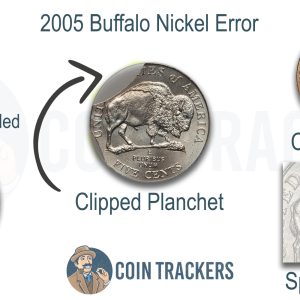
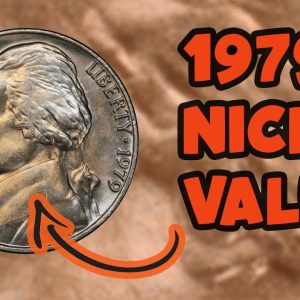
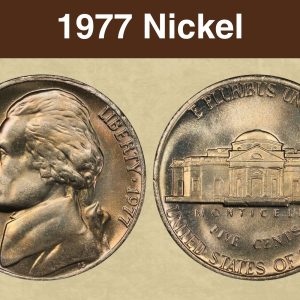
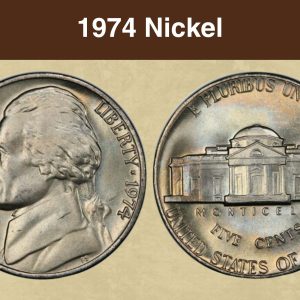
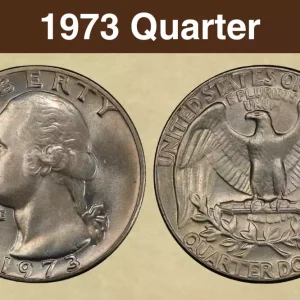
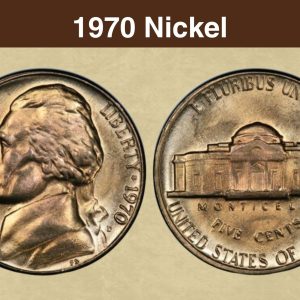
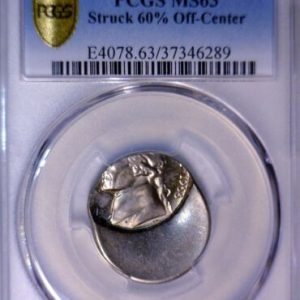
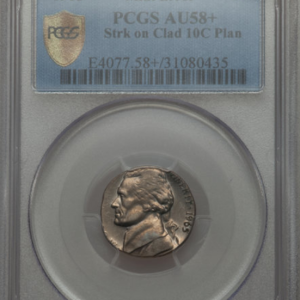
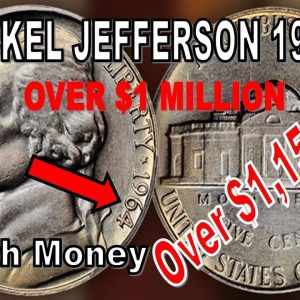
Is a 1911 V nickel worth anything?
About This Series The Greysheet Catalog (GSID) of the V-Nickels (1883–1912) series of Nickels in the U.S. Coins contains 1 distinct entries with CPG ® values between $0.90 and $10,500.00.
What are the key dates for V-nickels?
The key dates for the V nickel (Liberty Head nickel, 1883-1913) are 1885 and 1886, which have the lowest mintages. The 1912-S is also a key date, being the only V nickel struck in San Francisco. The extremely rare and valuable 1913 V nickel is a special case, as no official 1913 Liberty head nickels were released, but five are known to exist.
Where is the mint mark on a Liberty V nickel?
The mint mark on a Liberty Head (V) Nickel is located on the reverse (tails) side of the coin, below the dot separating the words “CENTS” and “UNITED,” near the 7 o’clock position. Philadelphia-minted Liberty Head nickels do not have a mint mark, while those from Denver (D) and San Francisco (S) will have a “D” or “S” in that location.
What makes the 1911 nickel so special?
Liberty is depicted wearing a coronet, and is surrounded by 13 stars representing the original colonies. The reverse features a large Roman numeral V (five) encircled with an agricultural wreath of wheat, corn and cotton. The historic 1911 Liberty Head nickel was struck at the Philadelphia Mint over 95 years ago.